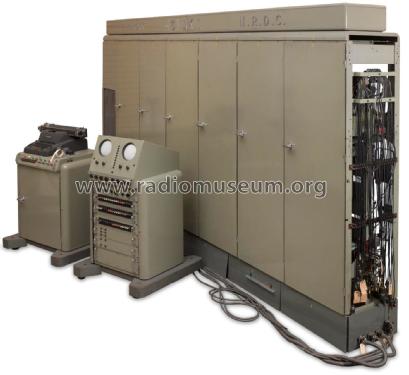Elliott NRDC 401 Mk I Mainframe Computer
Elliott Brothers Ltd.; Elliott Brothers (London) Ltd.; London, Marconi-Elliott (Microelectronics) Ltd.; Glenrothes
- Country
- Great Britain (UK)
- Manufacturer / Brand
- Elliott Brothers Ltd.; Elliott Brothers (London) Ltd.; London, Marconi-Elliott (Microelectronics) Ltd.; Glenrothes
- Year
- 1953 ?
- Category
- Signal Processing and Computing
- Radiomuseum.org ID
- 363127
- Wave bands
- - without
- Power type and voltage
- Alternating Current supply (AC)
- Loudspeaker
- - - No sound reproduction output.
- Material
- Various materials
- from Radiomuseum.org
- Model: Elliott NRDC 401 Mk I Mainframe Computer - Elliott Brothers Ltd.; Elliott
- Shape
- Rack
- Notes
-
Elliott NRDC 401 Mk I Mainframe Computer
- Year Introduced: 1953
- System Type: Serial binary mainframe computer using 2’s complement fixed-point arithmetic.
- Word Length: 32 bits per word (plus 2 gap bits), supporting integer arithmetic and logical operations.
- Arithmetic Units: Includes two accumulators, a multiplier register, and general-purpose registers for flexible computing.
Performance:
- Addition and subtraction are executed in approximately 200 microseconds.
- Multiplication takes between 7 to 10 milliseconds, depending on operand sign.
Memory:
- Primary memory is a magnetic drum (fixed-head disk) with initially 1,024 words (8 tracks × 128 words).
- Designed for expansion up to 23 tracks, allowing roughly 2,944 words maximum capacity.
- Supplemented by fast internal nickel delay line registers for quick data access.
Instruction Format:
- 32-bit instructions with two addresses — one for the operand and one for the next instruction.
- Support for approximately 28 primary machine operations, including arithmetic, logic, shifts, conditional branches, input/output, and manual control.
Input/Output Devices:
- Photoelectric 5-level paper tape reader operating at 40 characters per second.
- Electric typewriter output at 10 characters per second used for program results and debugging.
- Later hardware expansions incorporated tape punch and card reader capabilities.
Physical Construction:
- Built using vacuum tubes (around 500 valves), housed in large cabinetry measuring roughly 13 feet long by 2 feet deep and 7.5 feet high.
- An internal air-cooling system maintains operational temperature.
- Designed with modular plug-in valve circuits for ease of maintenance and repair.
Control and Programming:
- Manual addressing and programming were required due to sequential memory access.
- Programs were written directly in machine code, with libraries developed for common mathematical routines.
- Manual control features included handswitch inputs and output feedback via CRT displays and speakers.
Typical Applications:
- Mainly scientific and statistical calculations, including operations research and data analysis.
- Emphasis on reliability and maintainability for continuous use in research environments.
- Mentioned in
- -- Collector info (Sammler) (Technical Details of the Elliott 400 Series Computers, Alex Reid.)
- Author
- Model page created by Gary Cowans. See "Data change" for further contributors.
- Other Models
-
Here you find 5 models, 5 with images and 2 with schematics for wireless sets etc. In French: TSF for Télégraphie sans fil.
All listed radios etc. from Elliott Brothers Ltd.; Elliott Brothers (London) Ltd.; London, Marconi-Elliott (Microelectronics) Ltd.; Glenrothes
